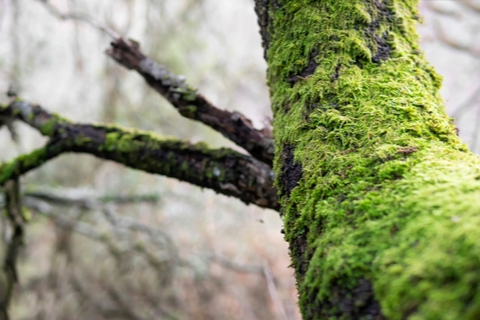Despite its ecological benefits, deadwood is a significant safety hazard to those accessing and working in the forest. There have been recent incidents within the industry where forestry workers have been injured by falling deadwood.
- Planning the sequence that the trees are felled can help minimise risk by creating gaps to fell other trees into. Clear any undergrowth and trip hazards from the escape routes. Take as many steps back into the escape route as possible keeping an eye on any hazards like branches snapping and being flung back into your path whilst keeping an eye on the ground.
Additionally, when it comes to everyone’s safety, including the public, the risk of branches/crowns being left hung up in trees during or after timber harvesting, which are then difficult to see when walking through the forest, is something managers should consider when harvesting, and in particular, thinning is planned. In woodland where public access is expected managers should include a documented walk through with the harvesting contractor before works are completed to ensure any dangerous crowns/hanging branches etc are made safe before work on the site is finished.
You must ensure that all appropriate Personal Protective Equipment is being worn when undertaking operations on site.
It is essential for your own safety and to reinforce the message to all that Tilhill Forestry INSIST ON SAFETY.
Remember:
- All mature trees tend to have some deadwood
- If woodlands are not thinned, then limited light penetrates the upper canopy meaning lower branches and lower canopy die off
- Most large hardwoods cannot be felled by mechanical harvester because the stems are too big. When in full leaf it is very hard to see up into the crowns of hardwoods making it difficult to spot potential hazards




